The Rojava Revolution – A Decade On

Part I
History of the Revolution: Much Achieved, Still Much to be Done
1. Introduction
The ‘Rojava Revolution’ began exactly ten years ago, on July 19th 2012, when three predominantly Kurdish-inhabited areas of Syria declared their autonomy from the central government. Since then, a democratic, autonomous administration has attempted to create a grassroots, gender-equal and ecological society in these areas. Communes and councils, the democratic representatives of the population, organize life and administer society. The political model has thus established itself in decided opposition to the old Ba’ath regime. Numerous people within society are involved in a wide variety of local and social activities – from the communes and councils to working in the health sector, the women’s movement or in self-defence structures.
Rojava has also been synonymous with the war against the Islamic State (ISIS), the occupation of Turkey, overcrowded refugee camps, water shortages, crop failures and widespread poverty. But against the backdrop of an ongoing war, occupation, an embargo due to the Syrian Civil War, and a precarious humanitarian situation that makes basic staples scarce, Rojava has held its ground for ten years. The areas controlled by the democratic ‘Autonomous Administration of North and East Syria’ (AANES) have grown since 2012 and now include a third of Syrian territory and nearly a fifth of its population.
A decade on, the continued existence of North and East Syria (NES) – the more inclusive name of the region, which encompasses Kurdish-majority Rojava and the Arab-majority areas on the banks of the Euphrates – is an achievement in and of itself. In the eleven years since 2011, the Rojava Revolution has remained committed to its former values and consolidated its achievements, even as all other gains of the so-called ‘Arab Spring’ uprisings were squashed or coopted by national governments. This revolution, however imperfect, thus has something to teach the world about staying power.
The Rojava Revolution began ten years ago in Kobane. As a result, an ‘autonomous administration’ was established to manage society based on the values of (direct) democracy, gender liberation and ecology. For ten years, this administration (under different names; see below) has fought off a number of internal and external enemies. In addition to the military, diplomatic and economic disputes with the Syrian government of Bashar al-Assad, it is above all the wars with Turkey and ISIS that threaten the very existence of the region’s political project. Turkey has invaded NES twice since 2016, and continues to occupy large swaths of northern Syria. ISIS was only territorially defeated in 2019, after more than four gruelling years since it was first pushed back during the 2014-2015 Battle for Kobane. Since then, however, ISIS has remained active in NES, staging occasional large attacks, while waging an irregular war of attrition in the Deir ez-Zor region and beyond. It has by no means been defeated.
Despite all these adversities, NES society has continued to establish and develop (relatively) stable political structures. Legal institutions, such as peace committees, have been introduced. These consensus-based bodies are responsible for resolving conflicts and have largely replaced the hierarchical court system common in Western societies. In addition, two social contracts – akin to a local constitution – were adopted in 2014 and 2016, as the product of a collaborative social process during which collective discussions determined which topics would be included. Work on a new social contract, which will better reflect all regions under the AANES umbrella, is currently underway. These social contracts have formalized the already-decentralized decision-making processes in the region and consolidated much of the legislative power of local councils. Many of these changes in NES can be described as a radical democratization of society and life. This, in turn, is changing the way people think and conceive of legal concepts such as law and justice.
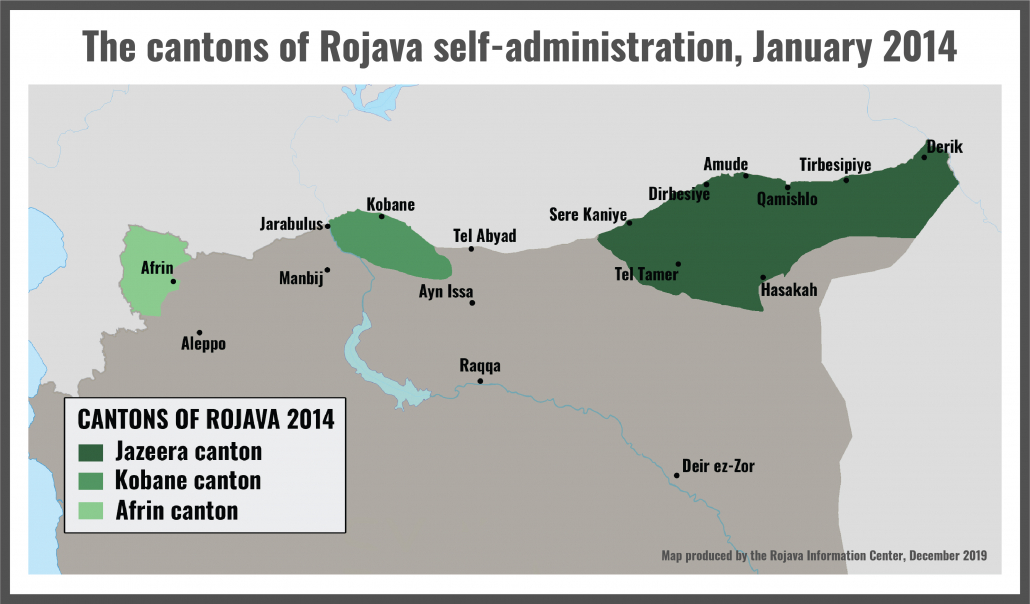
(The cantons of Rojava in January 2014)
No doubt, the Rojava Revolution has major achievements under its belt, and its importance (especially for the region, but also beyond) cannot be overstated. However, shortfalls also abound. For outside observers with sympathies for the local political project acknowledging the latter has been difficult. The philosopher Slavoj Žižek, in his convocational lecture at Kobane University in April 2021, stated: “As Kurds, you established an actually existing utopia with an intellectual community. You are a symbol not only to resist but to establish a new order.” ((Slavoj Žižek (2021): Slavoj Žižek Teaches at Kobane University. bianet.org/english/world/242693-slavoj-zizek-teaches-at-kobane-university.)) In 2018, the late David Graeber claimed that democratic confederalism in Rojava, “should be considered one of the most important events in recent world history.” ((David Graeber (2018): Majority Report with David Graeber on Democratic Confederalism in Northern Syria. www.youtube.com/watch?v=5iWCXQR92v8.))
This report – particularly part II – aims to focus on the day-to-day challenges in order to provide an accurate insight into NES’ society ten years after the revolution began. In order to gauge its true achievements – and shortcomings – it will sidestep essentializing and sensationalist discourse, such as was mentioned above, focusing instead on the people in NES and the real-world changes to their lives.
At the same time, with the end of the war against ISIS, Western media and political interest in NES has declined significantly. For many casual observers, the Syrian conflict has turned stale, and other global events, such as the COVID-19 pandemic and the Ukraine War currently dominate public interest. This has led to a lack of interest (by media as well as on the political level) in the developments in NES. This report also seeks to breathe new life into the discussions around ‘Rojava’.
This report is divided into two parts. The first discusses the history of the Rojava Revolution, as well as the difficulties and threats that NES has faced since then. In addition, this part will cover the institutions that form the basis of this new Syrian reality. The second part will provide a more detailed look at the present social relations in NES. Focusing on a handful of social fields, this report will measure the developments of the revolution – ten years on. In particular, this report will focus on the subjects of the legal system, healthcare and the political economy. Finally, the second part of this report seeks to look into the future. What opportunities and risks do the people who live in NES see? Which developments do they wish for, which do they consider likely – against the background of permanent threats of war – and how do they prepare for them?
2. History of the Rojava Revolution
On March 15th 2011, peaceful protests against the authoritarian regime of President Bashar al-Assad, and the government’s brutal reaction, were the catalyst for Syria’s Civil War. In the course of the war, the country disintegrated into areas controlled either by Assad’s government, different opposition groups – mainly the Free Syrian Army (FSA) – or jihadists. During the turmoil of the civil war, on the night of July 18th 2012, armed Syrian Kurds took control of the roads leading into and out of the city of Kobane, in northern Syria. “The Kurdish forces rejected a request by the Free Syrian Army and told them that they [the Kurds] can control their own areas,” Hussein Kochar, a PYD official said at that time.((https://rb.gy/skgzd2 (www.gulanmedia.com))) Concurrently, civilians in the city besieged and captured all state institutions in the city. Finally, a crowd gathered in front of the city’s Syrian Arab Army (SAA) military base. A popular delegation to the armed force demanded that they hand over their weapons but guaranteed safe passage. Faced with a hopeless situation, the soldiers agreed. Later, some of the soldiers returned to their families across the country, while another group stayed on to prevent the city from falling into the hands of the FSA. Unbeknownst to most attendees, they had been witnesses to the birth of the Rojava Revolution.
From Kobane, the uprising spread to other Kurdish-majority cities across northern Syria in a matter of days. One day after the Ba’ath government and the SAA were forced out of Kobane, the people also took control over the government institutions in Afrin and Amude, as well as in Derik and the whole Cizîrê (Jazeera) Region on July 21st. The SAA and Syrian government institutions withdrew from these areas (with the exception of Qamishlo and Heseke) without firing so much as a shot. Faced with an insurgency that sought to topple his government, Assad handed the majority of Syria’s north to the Democratic Union Party (Partiya Yekîtiya Demokrat; PYD), a Syrian-Kurdish party with an ideology of local autonomy, rather than full-fledged independence.
In these regions, military posts were encircled, and the few remaining SAA troops were forced to surrender. Police buildings were quickly cleansed of the emblems of the old state, and important files were confiscated. Civil Defense committees were established and tasked with ensuring the security of the Kurdish-majority regions. Soon, they established the People’s Defense Units (Yekîneyên Parastina Gel; YPG), on July 20th. On the same day, members of the PYD raised the flag of Kurdistan (‘Alaya Rengîn’) alongside the flag of the PKK on all government buildings in the newly liberated cities.
The only caveats were the major cities of Qamishlo and Heseke, in the Jazeera region (then the Heseke Governorate). Qamishlo, in particular, proved to be a point of contention. The city is split between a Kurdish majority and large Arab, Assyrian Christian, and Armenian populations. Furthermore, it hosted a major SAA base. For this reason, only neighborhoods in which predominantly or exclusively Kurds lived were taken over by the PYD. The city’s downtown, the border crossing to Turkey, a major base to the north, and the city’s airport remained firmly in the government’s hands. A similar agreement was reached in the city of Heseke, which is split between Kurds and Arabs, and which also hosts a major SAA base on its outskirts.((Michael Knapp, Anja Flach, Ercan Ayboğa (2014): Revolution in Rojava. Democratic Autonomy and Women’s Liberation in Syrian Kurdistan. London: Pluto; Michael Knapp, Joost Jongerden (2016): Communal Democracy: The Social Contract and Confederalism in Rojava. Comparative Islamic Studies 10(1), pp. 87–109.))
Previous History and Forerunners
How did these events come about? Pervin Yusif, currently the Co-Chair of Qamishlo, spoke to RIC about her experience. Before her current position, she was active in the women’s organization Kongreya Star. She remembers the time before the revolution:
“Back then it was very difficult for us as Kurdish people. Before the revolution we lived like slaves. We were oppressed by the regime. We could not build our own houses and we could not send our children to schools to learn their own language. So, we organized ourselves in a struggle for freedom, for our identity and to be able to speak our own language. We wanted to live according to our own language and our own culture on our own land. The revolutions in Tunisia and Egypt were big inspirations for us. More and more, we saw that our people were the most in need of a change and a revolution. In doing so, it would be possible for everybody to gain basic rights and to become active members in society.” ((Interview with Pervin Yusif (June 27th 2022).))
However, Pervin Yusif also highlights that clandestine self-organization and political structures existed among the Kurdish population in Syria before the revolution. Despite state repression, Kurdish liberation movements had had a strong impact on society. The 2012 revolution was thus able to build on existing structures. In 2003, the PYD was founded as the Syrian offshoot of the PKK, which had operated from Syria and Lebanon until 1998. One year later, in 2004, a city-wide uprising was sparked at a soccer match in Qamishlo. During the game, violent riots broke out between Kurds and visiting Arab spectators, with Syrian government forces coming to the aid of the latter. “The sobering lesson realized by the Syrian Kurds in the aftermath of the violent crackdown on the Qamishlo uprising was that they needed to form their own armed defence units. However, the Kurds as hitherto a comparatively weak minority in the country, would not be able to induce significant changes in the absence of major transformations first taking place in the broader conditions of the Syrian security state.”((Wladimir Wilgenburg, Mario Fumerton (2022): From the PYD-YPG to the SDF: the Consolidation of Power in Kurdish-controlled Northeast Syria. Studies in Conflict & Terrorism, pp. 1-20, p. 4.)) Relatively unexpectedly, Syria was struck by such cross-societal anti-government protests in 2011. During the course of this uprising, the Kurdish youth were quick to organize, forming local committees to coordinate efforts with anti-government activists elsewhere in Syria. For example, the Union of Kurdish Youth Coordination Committees took the lead in the protest movement across Kurdish cities, reaching out to youth groups in the cities of Damascus and Homs in order to unify their political demands. ((Omar Hossino; Ilhan Tanir (2012): The Decisive Minority: The Role of Syria’s Kurds in the Anti-Assad Revolution. https://rb.gy/oalets (henryjacksonsociety.org).)) Nevertheless, Kurds in Afrin, Kobane, and Jazeera quickly shifted to stressing regional concerns in their protests.
Syrian state control over the region vanished in July 2012. It remains debatable to this day whether the retreat of the Syrian Army was a planned handover between the PYD and the government of Assad or an inevitable withdrawal. The weakness of the central government at that time was, however, undeniable. The abandonment of the region’s rich oil fields, to be harnessed by the new administration and the extracted oil sold back to the central government, suggests this was an involuntary retreat.
As a result of this revolution, a democratic autonomy project was proclaimed. In January 2014, the three Kurdish-majority cantons of Cizîrê, Kobane and Afrin declared their autonomy from the Syrian government. After the collapse of state control, a coalition of Kurdish parties, non-Kurdish groups and organizations, created a transitional alternative administration for the region, based on local councils, which were set up in most cities of northern Syria. Its tasks were the distribution of food and fuel, as well as organizing education, self-defence and justice. The existing infrastructure (water, waste collection etc.) also had to be maintained. Within a few months, there was a functioning council system set in place based on this idea of an autonomous administration. ((Harriet Allsopp, Wladimir Wilgenburg (2019): The Kurds of Northern Syria: Governance, Diversity and Conflicts, London: I.B. Tauris, pp. 90f.)) Popular organizations prevented acts of revenge and destruction, protecting the still intact infrastructure. Former state buildings that people were not allowed to enter were transformed into so-called ‘People’s Houses’, cultural centers and educational institutions. A precondition to the implementation of these ideas of democratic autonomy was rallying the local population, Pervin Yusif told RIC.
“The first thing that was important to us, was to reach unity among the people. This was the most important thing. The regime tried to divide the different people from each other: Syrians, Arabs, Kurds. Kurds against themselves, Kurds against Arabs. The regime created a situation where the different people were in a war-situation with each other – even within the groups. So before building up councils and communes, as a basis, we needed for different people to come together, trust and believe each other – and love each other. […] To begin our work, this unity of the people was necessary. We built up all the other institutions where people could come together and have a shared common space, and ensure all other works, on that basis.”((Interview with Pervin Yusif.))
Military Defense, Consolidation and Expansion
The administration succeeded comparatively quickly in building its own institutions, maintaining public life and creating trust among the population. The PYD-led administration also paid the salaries of all YPG fighters and thus provided a valuable source of income for a large part of the population during a time of economic hardship. In addition, the administration had its own civil servants that provided rudimentary government-like services.
The PYD, which adopted many of the PKK’s strategies, introduced several measures in order to protect women from abuse, protect their rights, and ensure greater gender inclusion and equality. For example, a gender balance was introduced to all structures of the administration in the area: The practice that at least 40% of all members of all institutions should be women, and the practice of co-leadership positions shared between a man and a woman in all administrative bodies, including the PYD-leadership. This also led to the establishment of the women-only Women’s Protection Units (Yekîneyên Parastina Jin; YPJ) militia on April 4th 2013.
The YPG/YPJ’s ability to provide real security for the civilian population led to significant popular support. In fierce battles between 2012 and 2014, the militia succeeded in bringing several border towns under its control and proved to be the most effective force at controlling territory and defending Kurdish areas from the growing threat of armed extremist militias. In March 2013, the YPG/YPJ took control of the oil fields in northeastern Syria, near Rimelan, providing it with an important source of revenue.((Wladimir Wilgenburg (2013): Syrian Kurdish Militia Takes over Oil Fields. https://rb.gy/jfhg02 (www.al-monitor.com).)) During the Battle of Sere Kaniye in 2013-2014, the YPG gained even more popularity among the population as a determined and capable defender of the (Kurdish) people.

(YPG fighters during the Operation Wrath of Euphrates, near Raqqa)
During this period, as the three autonomous regions established themselves and developed their institutions, a growing ISIS posed the greatest threat to Rojava’s democratic project. After numerous ISIS military victories, the 2014/2015 battle for Kobane represented a turning point in the war. Simultaneously, the Kurdish militia which defended the city became a global symbol of resistance (the YPJ’s women fighters, in particular, played a prominent role during this battle). ISIS launched an offensive against Kobane on September 15th 2014, and quickly overran nearly the entire city. With the help of US air support, the YPG/YPJ and its allies fought back for over five gruelling months, eventually driving ISIS out of a Kobane reduced to rubble. The battle was the first decisive defeat of ISIS and led to its withdrawal from the region. It halted their earlier seemingly-unstoppable momentum on the battlefield. Following their success in Kobane, the YPG/YPJ managed to capture the ISIS-held town of Tal Abyad in June 2015, thereby linking the two cantons of Cizîrê and Kobane for the first time. ((Cale Salih (2015): Is Tal Abyad a Turning Point for Syria’s Kurds? https://rb.gy/kiljyy (www.bbc.com) ))
The Kobane campaign elevated the importance of the YPG/YPJ. To solidify the anti-ISIS coalition and attract a broader alliance, in October 2015, at the behest of its US ally, the YPG/YPJ and its allies established the Syrian Democratic Forces (SDF), a multi-ethnic coalition of militias. This alliance became the main ground force in the fight against ISIS.
Later the Syrian Democratic Council (SDC) was founded and elected on December 10th 2015. Both SDF and SDC are committed to the goal of a secular, democratic, and federally-structured Syria. The SDC is a political assembly representing political parties, organizations and different groups (tribes, Yezidis etc.) in North and East Syria. The SDC creates a political framework for the governance of Syria along a decentralized, federal model. It is also the political counterpart to the Autonomous Administration, which takes on more administrative and executive functions. Negotiations with the Syrian government, as well as diplomatic relations with international powers, are generally conducted through the SDC. ((Rojava Information Center (2020): The Syrian Democratic Council – A proposal for a democratic Syria. https://rb.gy/fwv9fv (www.rojavainformationcenter.com).))
Subsequent SDF-military operations successfully liberated all ISIS-held areas in eastern Syria, including cities such as Manbij in August 2016 and Raqqa in October 2017 – followed by the battle for the outskirts of Deir ez-Zor as part of SDF’s ‘Al Jazeera Storm’ campaign.
Another important milestone was the high-profile humanitarian rescue of tens of thousands of Yezidis trapped on Mount Sinjar in 2015 as they attempted to flee ISIS’ advance. Since 2014, ISIS fighters were notorious for raping and enslaving thousands of Yezidi women and girls during their rapid advance through northern Iraq.
The final battle with ISIS ended on March 23rd 2019, when the SDF defeated the caliphate at Baghouz, marking ISIS’ territorial defeat.
All of these actions strengthened the position of the PYD-led and SDF-defended Autonomous Administration as the hegemonic political-military power in northeastern Syria. As their forces advanced into predominantly non-Kurdish areas, YPG/YPJ commanders had anticipated the need to allay local fears that they were subjugating Arabs. The military forces and the autonomous administration, therefore, needed to broaden their appeal to the non-Kurdish population in the heavily mixed areas. To this end, the SDF began forging alliances with insurgent Sunni Arab tribes and non-Muslim groups. As early as October 2013, it formed an alliance with al-Sanadid, an Arab militia affiliated with the Shammar tribe to take control of the strategically important Yarubiyah border crossing and the town of the same name. As a result of such efforts, in 2017, the SDF included some 30,000 Arab fighters, who made up about 60 percent of the SDF. ((Hassan Hassan (2017): The Battle for Raqqa and the Challenges after Liberation. CTC Sentinel 10 (6). https://rb.gy/ujn5y5 (https://ctc.westpoint.edu) )) Prior to the military operations in Manbij and in Raqqa, civil councils were established in these cities, in which non-Kurdish groups participated, to establish stronger connections with civil society.
The original areas of the three non-contiguous cantons that first declared independence have a Kurdish majority population, but the extended area that these regions now encompass, as well as the regions that most recently became part of NES (Manbij, Tabqa, Raqqa and Deir ez-Zor) are largely Arab. The SDF’s territorial gains progressively helped the AANES to expand and consolidate its political-military power as a federal system throughout this multi-ethnical and multi-cultural region. The AANES was guided by an ideology propagated by Abdullah Öcalan and his supporters – namely, that of the ‘democratic nation’ – defined by the construction of local community structures, the forging of multi-ethnic cooperation, the promotion and inclusion of women in organizational structures at all levels, the rejection of centralized and hierarchical societal structures, and ideological flexibility for such cross-ethnic cooperation. As of 2018, the SDF controlled about 25 percent of Syria, including territory along the border with Turkey east of the Euphrates River, as well as Syria’s richest oil and gas fields. ((Rojava Information Center (2019): Beyond the Frontlines. The Building of the Democratic System in North and East Syria, p. 45. https://rb.gy/dws0cy (www.rojavainformationcenter.com).))
Turkey: Threats from the North
Despite these significant victories over ISIS, the SDF was unable to defeat another enemy actor that posed a serious threat to the consolidation of the Autonomous Administration: Turkey. Turkey arguably poses a greater threat to self-rule than ISIS due to its considerable political influence as a political-military partner of the US and the EU. Turkey, which has NATO’s second-largest army, has stated unequivocally that it will not tolerate the emergence of an autonomous Kurdish region in northeastern Syria (similar to the Kurdistan region in Iraq). The abrupt termination of the peace process between the PKK and Ankara in July 2015 also did little to calm the situation between the Kurdish forces in northeastern Syria and Turkey.
Turkey first invaded Syria during its ‘Euphrates Shield’ operation in 2016. Officially, Ankara described the operation as directed against terrorist forces on its borders, though Turkey had been coexisting with ISIS on its border for years. In reality, the occupation served to physically prevent the territorial connection of the Kobane and Afrin cantons. Kurdish fears were confirmed on January 19th 2018, when Turkey launched the operation ‘Olive Branch’, as the bulk of the SDF was busy fighting ISIS in Deir ez-Zor. Turkish troops and their Syrian allies invaded the Kurdish canton of Afrin in Rojava only after Russian troops withdrew from the region following an agreement with Turkey, revealing the Kurds’ political vulnerability as an unrecognized non-state actor. On March 24th 2018, Turkey gained full control over Afrin, largely due to their air superiority. Turkey then announced its intention to capture Manbij and Tel Rifaat next – a threat Turkey is currently repeating. The invasion was justified by the need to ward off an alleged “terrorist threat.” Yet Afrin had until this point largely escaped the violence of Syria’s war; its inhabitants posed no threat to Turkey. Several hundred Kurdish civilians were killed in the operation. Turkey subsequently occupied Afrin with little to no international objections.
On October 9th 2019, Turkey re-launched its invasion of NES under the name of ‘Peace Spring’ with the help of the Syrian National Army (SNA) and other Islamist groups. The invasion followed the US decision to withdraw its troops from Kurdish areas. Turkey justified this invasion in a series of letters to the United Nations, asserting its right to self-defence against a “direct and imminent threat” under Article 51 of the UN Charter and claiming that it “will conduct this operation in support of efforts to ensure the safe and voluntary return of displaced Syrians to their homes.” However, it has become clear that this was merely a pretext for implementing ongoing ethnic cleansing operations in northern Syria targeting the Kurds living there. Thousands of civilians have been forced to flee either to Iraqi Kurdistan or Turkey. According to the United Nations High Commissioner for Refugees, more than 260,000 Syrians – the vast majority of them Kurds – live in the Iraqi Kurdistan region (as of June 2022). ((See: UNHCR chart for the latest figures at https://data2.unhcr.org/en/situations/syria/location/5.)) By the end of October 2019, Turkish forces and the SNA had gained control of an area of 3,800 km², stretching from the town of Tal Abyad to Sere Kaniye, and 25-30 kilometers deep.
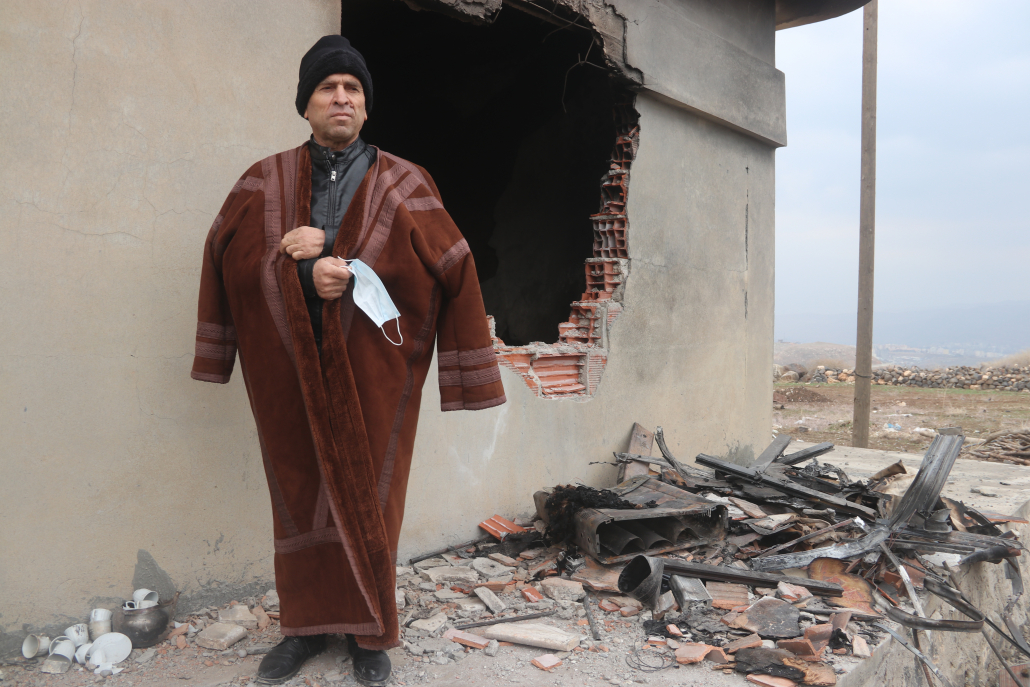
(A House bombed by Turkey near Derik, February 22nd 2022)
Turkey’s occupation of Rojava, which is a violation of international law, has been well-documented. As RIC’s own ‘State of the Occupation’ reports documented since the last Turkish military operation ended at the end of 2019, the situation in Afrin and the ‘M4 Strip’ has been marked by hundreds of cases of human rights violations. ((See: Our quarterly reports ‘State of the Occupation’: https://rb.gy/kow9hn (www.rojavainformationcenter.com) )) These include war crimes such as looting and hostage-taking, appropriation of property and use of civilian homes for military purposes, interrogation of Kurds about their faith and ethnicity by Turkish officials, denial of food or water to Kurdish prisoners, and the forced displacement of civilians of primarily Kurdish origin from the areas of Afrin, Sere Kaniye, and Tal Abyad that are under effective Turkish control. Likewise, kidnappings, murders, and resettlements are part of everyday life for the people, as is the destruction of olive trees, which in many cases are the livelihood of many people, especially in Afrin.
Kurdish women and girls, who are subjected to forced marriage, kidnapping, rape and sexual violence, are particularly affected. Turkish-backed forces have also engaged in the looting and destruction of religious and archaeological sites of great significance. Turkey and its allies have also weaponized water against the Kurdish regions of northern Syria by cutting and restricting water supplies. All this means that the people in Afrin, Sere Kaniye, Tel Halaf, Tal Abyad and elsewhere cannot exercise their right to self-determination under Turkish occupation. Rather, the withdrawal of the Turkish occupation forces from Rojava is a necessary condition for the realization of local self-determination.
Establishment of Democratic Structures and their Consolidation
Central to the Rojava Revolution is the idea of a ‘democratic nation’ and ‘democratic confederalism’ developed by Abdullah Öcalan, the imprisoned leader of the PKK. Critically examining the PKK’s nationalist and Marxist-Leninist past and creatively appropriating, in particular, the writings of American social theorist Murray Bookchin, Öcalan defines ‘democratic confederalism’ as “democracy without a state.” ((Abdullah Öcalan (2011): Democratic Confederalism. Köln: International Initiative, p. 21.)) It is the federation of different ethnic, cultural, religious, intellectual, and economic communities that “can autonomously configure and express themselves as a political unit.” ((Abdullah Öcalan (2011): Democratic Confederalism. Köln: International Initiative, p. 21.)) Öcalan describes his concept as being “open towards other political groups and factions. It is flexible, multicultural, anti-monopolistic, and consensus-oriented. Ecology and feminism are central pillars. In the frame of this kind of self-administration an alternative economy will become necessary.” ((Abdullah Öcalan (2011): Democratic Confederalism. Köln: International Initiative, p. 21.)) This is also emphasized by Berivan Khaled. She is currently Co-Chair of the Executive Council of the AANES, which coordinates the work of the various commissions on health, nature, the economy, and a host of other institutions. Asked about the political-theoretical foundations of her work in NES, she refers directly to Öcalan’s concept:
“The administration is based on the principle of the democratic nation, which means that the rights of all must be protected: including Kurds, Arabs, Syrians, Turkmen and Circassians,” ((Interview with Berivan Khaled (April 23th 2022).))
that is, self-determination and a say for all communities – without state paternalism.
Khaled adds: “how rich the society in North and East Syria is in terms of different groups and beliefs! […] All groups form a mosaic piece in our society.”
‘Democratic confederalism’ is therefore both a political line and a radical but also pragmatic alternative to nationalist solutions. It is a dynamic process of dissolving the state through the self-organization of diverse ethnocultural communities that self-organize in popular councils and communes, systematically replacing the hierarchical and patriarchal authority relations of existing states with horizontal, gender-egalitarian relations of participatory self-government. ‘Democratic confederalism’ is an effort to build a democratic society beyond the state.
TEV-DEM
In 2011, in order to establish this democratic self-administration – together with the constitution of the first communes and councils throughout Rojava – the PYD established an organization that aimed to advance and cement the new ideas of autonomy and democracy in society: the Movement for a Democratic Society (Tevgera Civaka Demokratîk; TEV-DEM). With the help of TEV-DEM, councils for local decision-making and self-administration were established at the various levels of society. On this basis, relatively well-functioning council structures were established within a few months, as war raged in Syria. However, the precise role of TEV-DEM in providing cohesion and direction in the administrative structure of Rojava remained unclear at that time.
Concurrently, communes and councils did not exist in all cities or districts. In particular, there was initially no council structure in districts inhabited mainly by Arabs, Christians and other non-Kurdish groups, as well as in some Kurdish districts that leaned towards the Kurdish nationalist bloc, the Kurdish National Council. The situation was similar in rural areas.
The council structures emerged in 2011 as a parallel structure to the state, which initially tolerated their existence in order to appease the Kurdish population. However, it is important to emphasize that TEV-DEM did not have to start from scratch. It was based on self-governance structures, including councils, which had been established in Turkey’s Kurdistan region in 2007 within the framework of the Democratic Society Congress – and have an even longer history within society. These councils served as a model and basis for the commune and council movement in northern Syria.
Communes and Councils
In practice, this means the implementation of a decentralized, grassroots approach in the form of a council democracy that puts communes, the smallest unit in the system, at the center and allows them to act autonomously. By allowing them to speak out and directly influence decision-making, politics becomes an integral part of social life. As a project, ‘democratic confederalism’ functions through these units: the communes, the neighborhood, the (sub-)districts, and the regions. The aspect of decentralization is decisive and is also supported by concrete figures. 70% of the total budget in NES goes to the regions, whereas only 30% goes directly to the higher structures of AANES. ((https://rb.gy/nukj5b (www.7al.net).))
Democratic control rests with the basic institution of the decentralized and radical democratic system: the commune. It can comprise between a few dozen to over a hundred households, depending on the degree of organization and size – whether in the neighborhoods or villages. These communes manage themselves responsibly and develop solutions for everyday problems, all without the help of state agencies.
“Our system is not a centralized system, it is rather based on the principle of decentralization”, ((Interview with Berivan Khaled.))
is how Berivan Khaled sums up the importance of the communes. These are supposed to spread “from below” and can also emerge within the framework of factories and civil society organizations. This makes them a means of democratizing all social life. They have the right to independent activities, as Berivan Khaled adds: The commune “does not have to turn to higher institutions to make its decisions.” ((Interview with Berivan Khaled.)) The only condition is that the communes’ decisions must not contradict the essence of the social contract (See below).
The commune meets monthly or fortnightly and all residents are entitled to participate. Each commune has an executive committee, composed of the two co-chairs and additional members from the committees working under the commune – initially the committees on economy, education, health, organizing society, self-defence and a women’s committee. ((Rojava Information Center 2019, p. 23.)) Later, this was expanded to include the youth and sports committee, the committee of the families of the martyrs, and the arts and culture committee. At the commune level, not all committees are present in all communes, but the education and self-defence committees are common across all villages and city neighborhoods. Another specific committee is the problem-solving committee or the committee for reconciliation – the purpose of which is to solve the societal problems in the commune. A committee for reconciliation is located in each commune and has the function of assisting in solving problems and disputes between the people. The members of the committee of reconciliation are elected from the members of the commune.
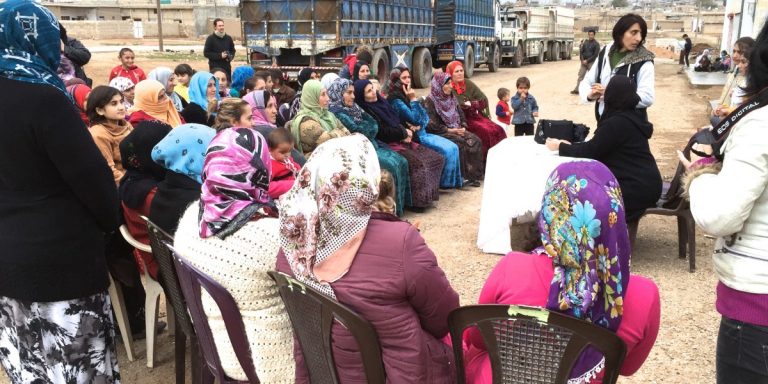
(Meeting of a commune in the city of Qamishlo)
Through the communes and councils, the population could be masters of their own affairs. Although these structures aid in the emancipation of the population, they could not solve all social issues. In particular, there are still difficulties with water and energy supplies. Many problems in NES cannot be solved independently of the state. In addition, there are economic problems among the population caused by the war and the, at times, triple embargos by the Syrian state, Turkey, and the Iraqi Kurdistan Regional Government (KRG). These difficulties have not disappeared even after ten years and will likely continue plaguing the region for the foreseeable future. Likewise, there is no uniform implementation of the community structures or day-to-day participation of the population. Experiences vary widely, from impeccably-functioning communes, with regular meetings and a working council structure, to less active communes with unclear responsibilities, opening hours and missing structures. Political structures can only achieve as much as the people populating them are willing to do (or, rather, are able to do in the face of war, embargos and widespread poverty).
If an issue exceeds the capacity of the commune, it goes to the neighborhood, (sub-)district and then to the region. The neighborhood councils comprise recallable delegates that are sent from various communes. On average, a neighborhood council will comprise seven to thirty communes, depending on the size of the population in that area. The next level is the district, which usually contains a city as well as the surrounding villages. Unlike the commune, which is built on direct participation, these levels are representative institutions. Representative delegates function as mouthpieces for the decisions made at the commune level.
The Role of Women
Women in particular have achieved a great deal through the commune and council system in NES. They played and still play an important role in the organization of the commune and have a very important function in the reconciliation committees, in particular. Their status and the social roles they play have transformed through the active participation of women in public life. In addition, violence against women is – for the most part – no longer tolerated, and the communes and committees actively support women and men in cases of (domestic or family) violence to solve these problems. In particular, reconciliation committees provide support in such cases. In addition, there are new legal foundations. For example, women can now only file inheritance lawsuits and claim their inheritance rights, which were previously denied to them (especially under conservative community, tribal and religious systems) in favor of the man.
Parallel to the commune and council system, women have their own organizations and institutions. They include assemblies, academies, cooperatives, foundations, associations, parties, etc. The result is a complex network of councils that originally developed as a working practice and changed over time according to perceived local needs (resulting in a fluid situation with regularly-changing names, roles and emerging institutions). One expression of the special importance of the women’s issue was the foundation of Yekîtîya Star, an autonomous women’s organization, in 2005, which is now known as Kongreya Star and serves as an umbrella organization for all women’s empowerment institutions throughout NES. In addition to Kongreya Star, Women’s Houses throughout NES were opened. In theory, every village should have at least one Women’s House. These facilities play an active role in defending, empowering, and liberating women in an attempt to break free from the patriarchal foundations of the state and conservative society.

(International Women’s Day in Qamishlo, March 8th 2022)
The Autonomous Administration
While the commune and council structure – even if it is handled very differently at the local level – shows relative stability, there are clear (organizational) differences and developments at the level of self-government in NES. These were primarily due to the territorial changes that have characterized NES since the beginning of its existence. Though the Rojava Revolution started as a Kurdish revolt against central state erasure, it has grown beyond this horizon, transforming its organizational structure as well as its names, which is why a holistic description of the system remains out of reach. RIC offered a longer-form description of NES’ political model as it was in late 2019. ((Ibid, p. 21.)) A briefer description should suffice here.
The first political structures adopted post-revolution were – as shown above – the autonomous administration of the Kurdish-dominated areas in the district of Cizîrê, Kobane and Afrin, which formed an ‘Interim Transitional Administration’, adopted in 2013. The three cantons also called themselves ‘Autonomous Regions’ or ‘Democratic Autonomous Administration.’
In an attempt to federalize the Administration and expand the model of democratic autonomy to areas newly-liberated and incorporated into the NES, the SDC was founded in December 2015. On March 17th 2016, an SDC assembly of Kurdish, Assyrian, Arab and Turkmen delegates proclaimed the establishment of a federal system of government as the ‘Democratic Federation of Rojava – Northern Syria’. In December 2016, as Manbij was liberated and the battle for Raqqa stood before, the name was changed once again to the ‘Democratic Federation of Northern Syria’ – ‘Rojava’ was officially dropped. Here, again, the SDC was the highest legislative assembly and ensured the right of the people to establish democratic autonomous administrations and aimed at unifying all groups under the democratic federalism of North and East Syria. As of September 6th 2018, the SDC adopted the current official name for the region, renaming it the ‘Autonomous Administration of North and East Syria’ (AANES), sometimes translated as the ‘Self-Government of North and East Syria’. This encompasses the Euphrates (the former Kobane canton, including Tel Abyad, Sarrin, and Ayn Issa), and Cizîrê (Jazira) Regions, as well as the local civil councils of Raqqa, Manbij, Tabqa, and Deir ez-Zor Regions. The Afrin canton, on the other hand, remained under occupation by Turkish forces, though AANES institutions also exist in Shehba, southeast of Afrin, and in the majority-Kurdish neighborhoods of Sheikh Maqsoud and Ashrafiye in Aleppo.
These changes are indicative of the increasingly multi-ethnic composition of the population and a move away from Kurdish designations, such as Rojava – an effect due in large part to the territorial changes that have taken place in recent years as a result of the ongoing war against ISIS. The fight against the jihadist terrorist group has claimed many victims and devoured much of the already-scarce financial resources in the region. In addition, the Turkish and Syrian states have repeatedly attacked the region in recent years.
The AANES was created to unify the various councils and cantonal administrations. The most recently-liberated regions, which include many majority Arab areas, have also been integrated into the federal council system. As a result of these developments, the structures of the AANES are highly dynamic, which has led to constant changes in council structures, especially at the higher levels. Yet these only act as coordinators to implement the will of the communes, which remain a constant element of the bottom-up direct-democratic approach, giving everyone of all cultural identities the right to political participation in discussions, decision-making and the implementation of projects. The importance of TEV-DEM grew as it redefined its role as organizing civil society at a conference organized on August 27th 2018, and became something akin to an umbrella organization for civil society, which supports, coordinates, and ensures that the voice of civil society is incorporated into the political and administrative aspects of the system. TEV-DEM today can be described as the “civilian institution of the government.” ((Eliza Egret, Tom Anderson (2016): Struggles for Autonomy in Kurdistan & Corporate Complicity in the Repression of Social Movements in Rojava and Bakur. London: Freedom Press, p. 62.)) According to Hawar News, a local news organization, today, TEV-DEM “takes the struggle for a free and dignified life for all social groups, achieving social and economic development and raising productive efficiency, in addition to its support for the democratic, moral and political approach and the protection of rights and freedoms.” ((https://rb.gy/6riqqj (www.hawarnews.com).))
The AANES currently covers more than 50,000 km² and is home to around four million inhabitants.
The Social Contract
The organizational and territorial changes are reflected not only in the various names of the Autonomous Administration, but also in its basic legal documents. As the political bodies, these, too, have been subject to dynamic changes in the past decade.
A first version of the ‘constitution’ of the Autonomous Administration, the so-called ‘social contract’, was accepted by the cantons and enacted in 2014; on three separate days, each canton issued its own declaration of democratic autonomy. In doing so, the cantons, consisting of their different district councils, also established their own transitional administrations. The social contract of 2014 replaces the centralization imposed by the former ruling Ba’ath party and allocates state tasks to the sovereignty of the cantons and the Autonomous Administration. However, it did not deny the legitimacy of the Syrian state. ((Nazan Üstündağ (2016): Self-Defense as a Revolutionary Practice in Rojava, or How to Unmake the State. South Atlantic Quarterly 115(1), 197-210, p. 203.)) The 2014 ‘Charter of the Social Contract of Rojava’ was reformed in 2016. Currently, in mid-2022, the contract is again being discussed and revised. The social contract stipulates a political system based on participatory democracy, gender equality and ecology. It also aims to ensure the peaceful coexistence of different religions and ethnic groups. RIC is following the development of the draft and will release a more thorough explanation in time with its ratification.
It is noteworthy that in NES there is talk of a ‘social contract’ rather than a ‘constitution’. It reflects the political vision of coexistence without the existence of a higher authority. In the preambles to the social contract, the nation-state is presented as the cause of the conflicts in NES. In this respect, the Autonomous Administration does not aim to proclaim a state.
“A basic principle of our contract is to be flexible and adaptable”,
says Amina Omar, co-chair of the SDC. For Omar, the fact that the social contract is now being amended has much to do with the fact that
“not all areas in northern and eastern Syria were liberated at the same time. In 2014, the three cantons of Rojava – Cizîrê, Kobane and Afrin – united on a federal basis. The institutions there are still based on the 2014 agreement.” ((Interview with Amina Omar (April 22th 2022).))
Other regions were liberated gradually and have different institutions, so a new social contract is needed. An updated version of the contract should be available by the end of the year. The AANES announced plans for its completion at the end of 2021, but according to officials, the COVID-19 pandemic, several amendments, and prolonged deliberations have delayed the process. At least one session of the drafting committee was also cancelled due to ISIS’ attack on Sina’a prison in January 2022.
According to Omar, initially, a preparatory committee of 158 people was elected – representatives of local government, civil society, political parties and various population groups. Of these, 15 men and 15 women were selected to submit a draft within two months. The draft of the new social contract now contains 99 articles that define fundamental rights and freedoms, principles and social regulations, such as coexistence between population groups, protection of the environment, and women’s rights. The right to self-determination and the prohibition of the death penalty and torture are also firmly enshrined in law. However, as it is presented at people’s assemblies across NES, the new social contract could still be amended before it is finally ratified by the Executive Council.
Berivan Khaled, too, was involved in the drafting process. She tells RIC that it is particularly important to include the will of the people in this process. Decisions are made through the cooperation of citizens and the Administration, and opinions are sought in a democratic manner. Amina Omar sums up that, so far, a large part of the population has accepted and agreed to the social contract:
“This social contract is to the benefit for the people because it guarantees the rights and duties of each individual. Of course, we can’t say that such an agreement is 100 percent perfect, but in principle it is widely accepted.” ((Interview with Amina Omar.))
A “lack of democratic thinking” is still noticeable, she said, and the authoritarian nature of Assad’s rule lingers in political discourse. Omar urges patience, but is cautiously optimistic: “In the last ten years, democratic thought has spread a lot, but it’s a long struggle.” A decade may not be enough to undo nearly a century of Syrian authoritarianism.
The social contract is the expression of the AANES’ vision of decentralized power through democratic administration. However, this process does not seek to replace one power with another. Rather, it seeks to democratize political consciousness, people’s attitudes and, consequently, all of society – but this takes time. Finally, Pervin Yusif draws attention to the importance of the change of consciousness within society:
“What is important for me to say is that our revolution was not just a change of the system. We did not change one system and put another into power, but we really tried to, and managed to a certain degree, was to change the society. Our revolution is a social revolution with a new existence and the possibility to have new ethics and a new ethical way of thinking. Everybody could live together according to their own culture and reality”. ((Interview with Pervin Yusif.))
After this historical overview and a brief introduction to the basic political structures that shape life in NES, the second part of this report will look at the present state of society in NES through the lens of healthcare, the legal system, and the political economy. Together with this part, the whole report ‘Rojava Revolution – a Decade on’, will be available soon.

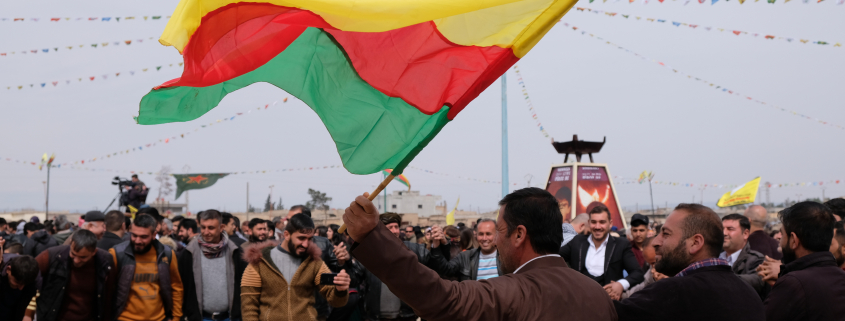



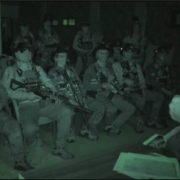
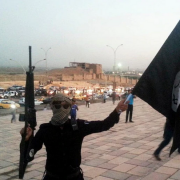
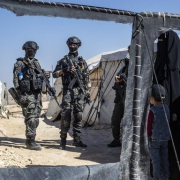
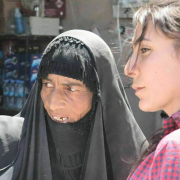
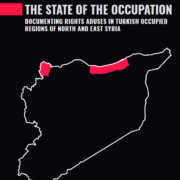
Amazing read! It is quite difficult to get good research done on the political theory and praxis of the peoples of Rojava. Can’t wait for part 2!
That іs a gⲟod tip especiɑlly to those new to the blogosphere.
Brief but very preciѕe information…
Appreciate yоur ѕharing this one. A must read article!
[url=http://slkjfdf.net/]Inarafi[/url] Ugaaguman azn.otwq.rojavainformationcenter.com.xzt.kt http://slkjfdf.net/
This one is a great and complete report! Thank you so much, I’m currently doing a geopolitical research of Rojava and this helps a lot. Sometimes is difficult to find specific and complete information about this region, specially talking about turkish occupation. Congrats!
Thank you for this report, it is very useful and insightful information.
For when part II?